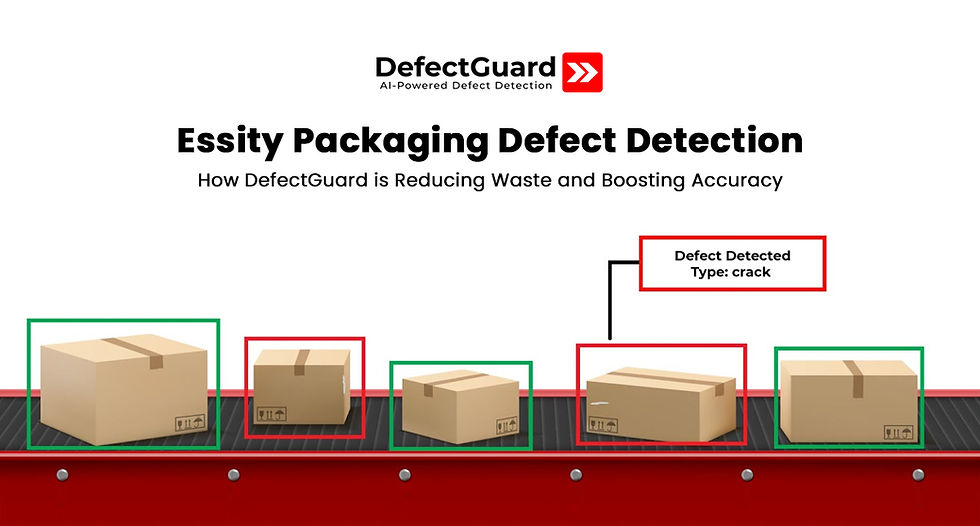How is One-Shot Learning Being Applied in Computer Vision?
- pyadav52
- Mar 18
- 3 min read

In the rapidly evolving field of artificial intelligence, one of the most exciting advancements is one-shot learning —a technique that allows AI systems to recognize or classify objects after seeing just a single example. At Brightpoint AI, we’re at the forefront of leveraging this technology to push the boundaries of what’s possible in computer vision . Let’s dive into how one-shot learning is transforming industries and reshaping the way machines “see” the world.
What is One-Shot Learning?
Traditional machine learning models require vast amounts of labeled data to learn patterns and make accurate predictions. For instance, training a model to recognize different breeds of dogs might involve feeding it thousands—or even millions—of labeled images.
One-shot learning flips this paradigm on its head. Instead of relying on massive datasets, one-shot learning enables AI systems to generalize from just one example . This is particularly valuable in scenarios where data is scarce, expensive to collect, or difficult to label.

Why Does One-Shot Learning Matter in Computer Vision?
Computer vision powers countless applications, from facial recognition to autonomous vehicles. However, many real-world use cases face challenges due to limited data availability.
Here’s where one-shot learning shines:
Reduced Data Dependency : In fields like healthcare or rare object detection, acquiring large datasets can be impractical. One-shot learning allows systems to make sense of new information quickly.
Real-Time Adaptation : Imagine a security system that can identify a new threat after being shown just one image. One-shot learning makes this level of responsiveness possible.
Cost Efficiency : Collecting and labeling massive datasets is time-consuming and costly. By minimizing these requirements, businesses can save resources while still achieving high performance.
Applications of One-Shot Learning in Computer Vision
Here are some of the most impactful applications:
1. Facial Recognition
One-shot learning has revolutionized facial recognition systems. For instance, imagine a smartphone that unlocks by recognizing your face—even if it only has one reference image of you. This capability is made possible by algorithms like Siamese Networks , which compare the similarity between two images and determine whether they belong to the same person.
2. Medical Imaging
In healthcare, one-shot learning is helping doctors diagnose conditions faster and more accurately. For example, identifying rare diseases from medical scans often involves limited patient data. With one-shot learning, AI models can assist radiologists by detecting anomalies based on a single case study or prototype image.
3. Retail and Inventory Management
Imagine a retail store using computer vision to track inventory. With one-shot learning, the system can recognize a new product SKU after being shown just one image, eliminating the need for extensive retraining whenever new items are introduced.
4. Autonomous Vehicles
Self-driving cars must navigate dynamic environments with countless unique objects, such as road signs, pedestrians, and obstacles. One-shot learning enables these vehicles to adapt to novel situations on the fly, improving safety and reliability.
5. Security and Surveillance
Security systems powered by one-shot learning can identify potential threats or intruders after being exposed to a single instance of suspicious activity. This proactive approach enhances situational awareness and response times.
The Technology Behind One-Shot Learning
So, how does one-shot learning work under the hood?
Several techniques and architectures have emerged to tackle this challenge:
Siamese Networks : These neural networks are designed to compare two inputs and measure their similarity. They’re widely used in facial recognition and signature verification tasks.
Prototypical Networks : These models learn a “prototype” representation of each class and classify new examples based on their proximity to these prototypes.
Memory-Augmented Networks : By incorporating external memory components, these systems can store and retrieve information about previously seen examples, enabling rapid adaptation.
These innovations are paving the way for smarter, more efficient AI systems that can operate effectively even in data-constrained environments.
The Future of One-Shot Learning in Computer Vision
As research continues to advance, the potential applications of one-shot learning are virtually limitless. At Brightpoint AI, we’re committed to pushing the envelope in this space. From enhancing personalized user experiences to enabling breakthroughs in scientific discovery, one-shot learning is set to redefine how machines interact with the visual world.
We believe that the true power of AI lies not just in processing vast amounts of data but in its ability to learn efficiently and adaptively. One-shot learning exemplifies this principle, offering a glimpse into a future where AI becomes more intuitive, responsive, and human-like.
Looking for AI solutions that work smarter with less data?
Contact Brightpoint AI today to explore how One-Shot Learning can enhance your business!









Comments